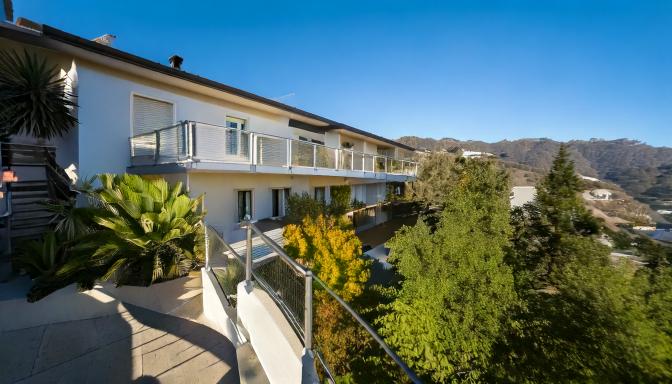Balcony vs Deck: Breaking Down the Differences

A balcony is a compact, elevated platform sticking out from your building—think cozy nook off your apartment with a railing and a view. A deck, though, is a broader, flat space, often raised on posts or sitting at ground level, giving you room to stretch out and party. Both are awesome, but balconies are smaller and attached, while decks can be bigger and standalone—oh, and elevated ones need balcony inspection or deck inspection to stay safe, especially with California laws like SB326 and SB721 in play.
As a civil engineer who’s built both (and loves kicking back on either), I’m here to dish the details. By now, you’ve got the gist: a balcony is your tight, elevated retreat; a deck is your spacious outdoor stage—elevated decks need SB326 inspections (condos, every 9 years) or SB721 inspections (apartments, every 6 years) to keep them solid. Stick with me, and I’ll break down design, safety, costs, and upkeep—all in a way that feels like we’re chatting over a burger, not crunching numbers. Let’s dive into the balcony vs deck showdown!
Balcony vs Deck: Design and Purpose
Picture this: a balcony juts off your second-floor bedroom—maybe 5 feet wide, framed by a railing, just big enough for a chair and some plants. It’s your personal escape, tied right to the building. Now, a deck? That’s the star of your backyard—could be ground-level or raised on posts, stretching 20 feet or more, with space for a grill, table, even a hot tub. I’ve designed balconies for city folks craving air and decks for suburbanites wanting a full outdoor room. The balcony vs deck choice hinges on space—balconies fit tight spots; decks need room to shine.
From my engineer’s toolbox, balconies lean on cantilevered beams or brackets—compact but sturdy. Decks, especially elevated ones, need posts, beams, and joists—more muscle to hold the load. Both face weather, so balcony inspection and deck inspection are key. SB326 and SB721 tag elevated versions as “Exterior Elevated Elements” (EEEs)—anything over 6 feet up gets checked. Balcony build? $1,000-$5,000. Deck? $6,000-$15,000 for 200 square feet—your vibe decides.
Safety Showdown: Balcony Inspection vs Deck Inspection
Safety’s where it gets serious. Balconies and elevated decks battle the elements—rain seeps in, rust nibbles bolts, rot sneaks into wood. I’ve seen a balcony where the ledger (the part against the house) rusted loose—caught it with a balcony inspection. Decks, with more surface, face bigger water risks. SB326 inspections (condos, 9 years) and SB721 inspections (apartments, 6 years) mandate deep checks—moisture meters, borescopes, even drills to test strength. The 2015 Berkeley collapse—six deaths from rot—pushed these laws hard.
Fact: 15% of elevated structures hide damage, per post-Berkeley studies. Skip deck inspection or balcony inspection, and repairs jump from $500 to $20,000 if it fails. I’ve fixed a deck where rot cost $10,000—caught earlier with SB721, it’d be $1,000. Deadlines? January 1, 2025—safety’s no joke.
Safety Musts
- Balcony: Check rails, ledger, supports.
- Deck: Test posts, beams, decking.
Building Balcony vs Deck: What’s Involved?
Building a balcony? It’s bolted to your wall—cantilevered beams or steel braces, topped with decking and rails. Quick, but precise—waterproofing’s critical where it meets the house. A deck—especially elevated—needs more: concrete footings, posts, beams, joists. I’ve used steel for decks when wood wasn’t enough—tough and lasting. Both need permits—cities want proof it’s safe. SB326 inspections catch balcony flaws; SB721 inspections flag deck issues.
A small balcony might cost $1,000-$5,000—elevated deck? $30-$60 per square foot, so $6,000-$12,000 for 200 square feet. Balconies are cheaper and simpler; decks demand more but deliver space. Either way, deck inspection or balcony inspection keeps it standing—no surprises.
Upkeep: Balcony vs Deck Maintenance
Maintaining a balcony is light—seal the wood or composite yearly ($50), check bolts, keep it draining. Decks, especially elevated, need more—slope it 1/4 inch per foot so water runs off, reseal, swap rusty hardware. I saved a balcony with a $200 fix—skipped upkeep on a deck cost $3,000 in rot repairs. Between SB326 inspections or SB721 inspections, walk it—soft spots or musty smells mean trouble.
Maintenance Costs
| Task | Balcony Cost | Deck Cost | Frequency |
|---|---|---|---|
| Sealing | $30-$100 | $50-$200 | Yearly |
| Hardware Fixes | $10-$50 | $20-$100 | As needed |
| Pro Inspection | $300-$800 | $500-$1,000 | 6-9 years |
Balcony Inspection and Deck Inspection: The Deep Dive
Balcony inspection and deck inspection overlap for elevated setups—both are EEEs. SB326 (condos) needs an engineer’s sign-off every 9 years—detailed, no shortcuts. SB721 (apartments) lets contractors join every 6 years—but both dig beyond looks. I’ve used infrared to spot water under a deck—saved thousands catching it early. Balcony inspection might focus tighter; deck inspection covers sprawl—but safety’s the goal. Data Point: Inspections cut repair costs by 20%, per insurance—huge when rot strikes. Deadline? January 1, 2025—stay ahead.
Case Study: A condo balcony passed a DIY check but failed SB326 inspections—rot in the supports. Fixed for $800 vs $5,000 later. Pros matter.
Reach Out to DrBalcony
Still torn on balcony vs deck? Or need to prep for SB326 inspections or SB721 inspections? DrBalcony won’t build or check it for you, but they’re here to guide you to the right pros and info. Curious about deck inspection, balcony inspection, or anything else? Contact DrBalcony today! Got questions? Drop ‘em in the comments—we’ll answer ASAP to keep your outdoor dreams on track!
